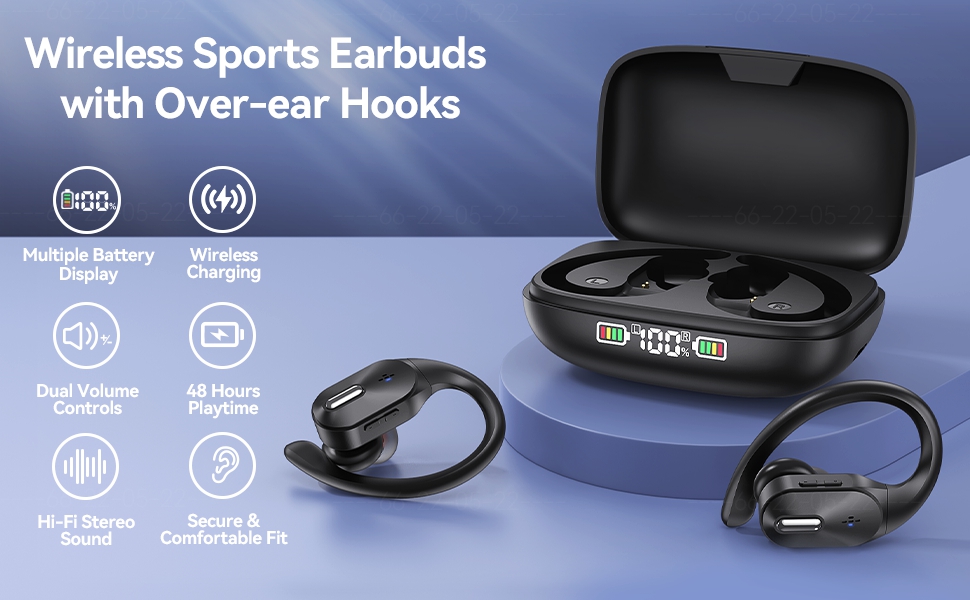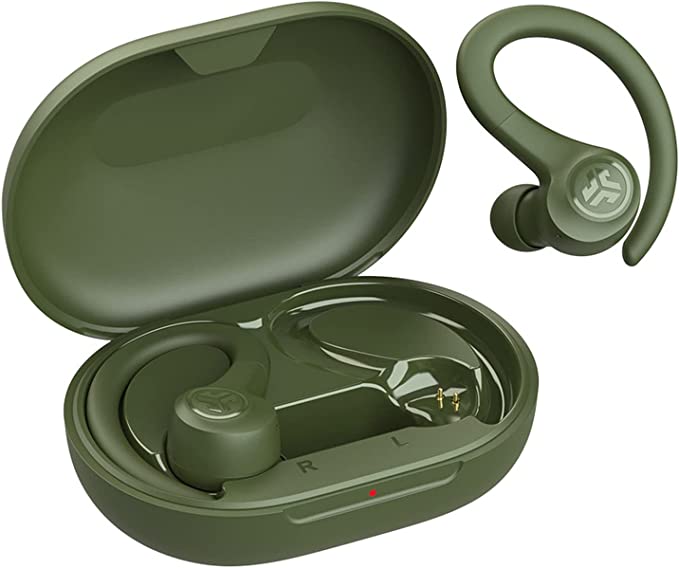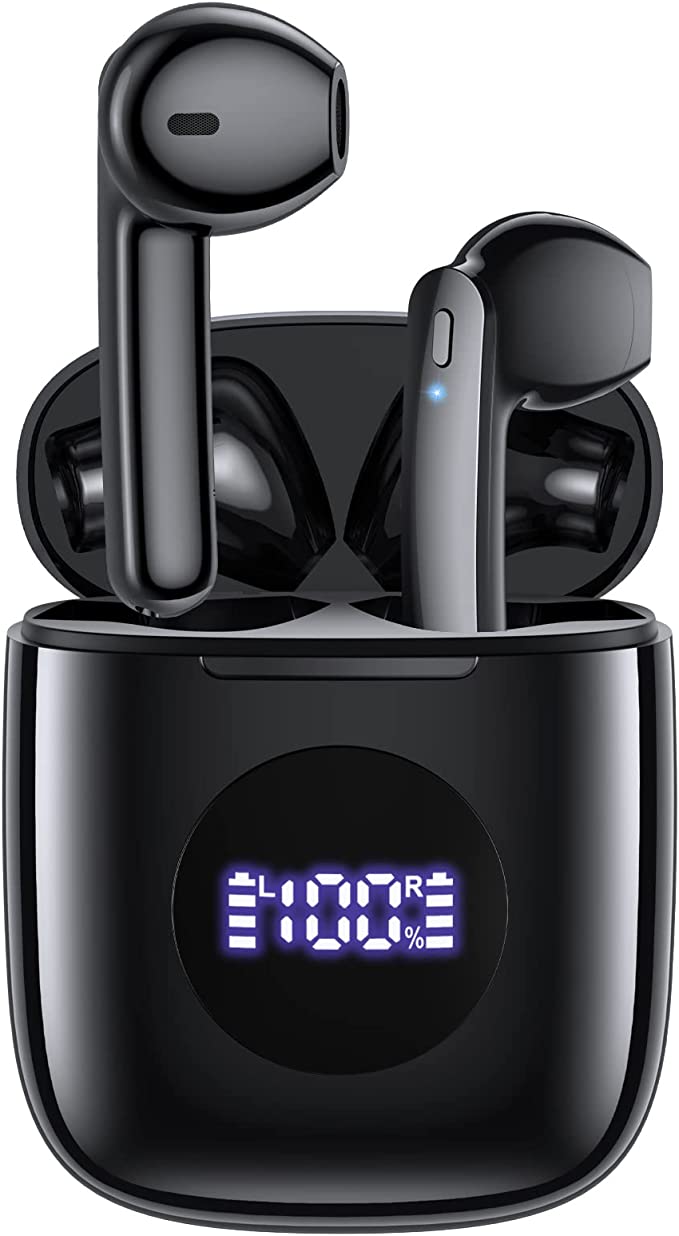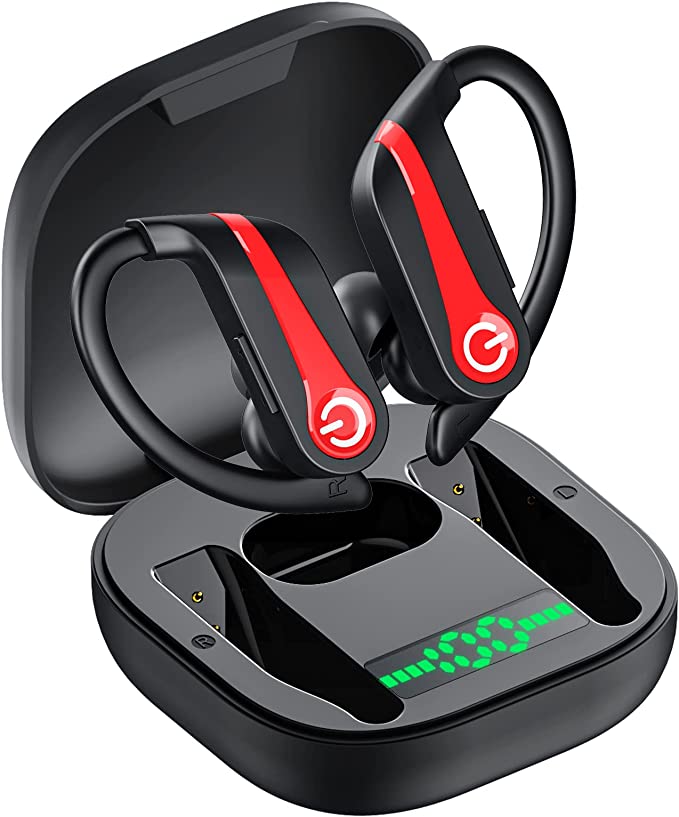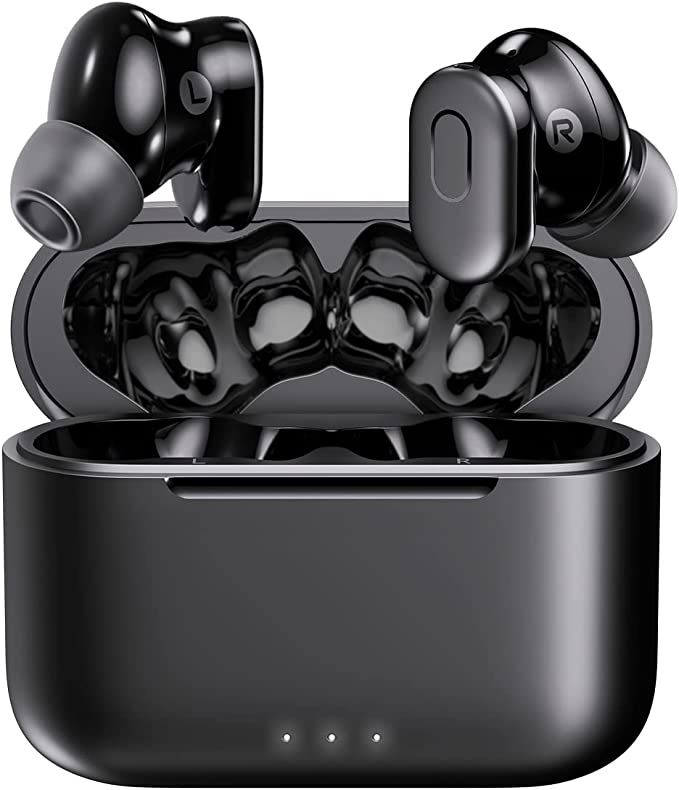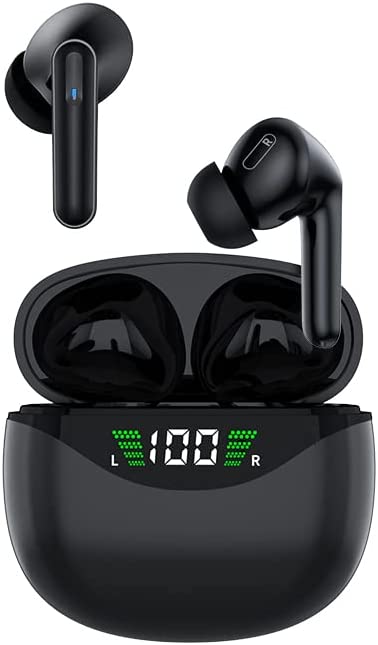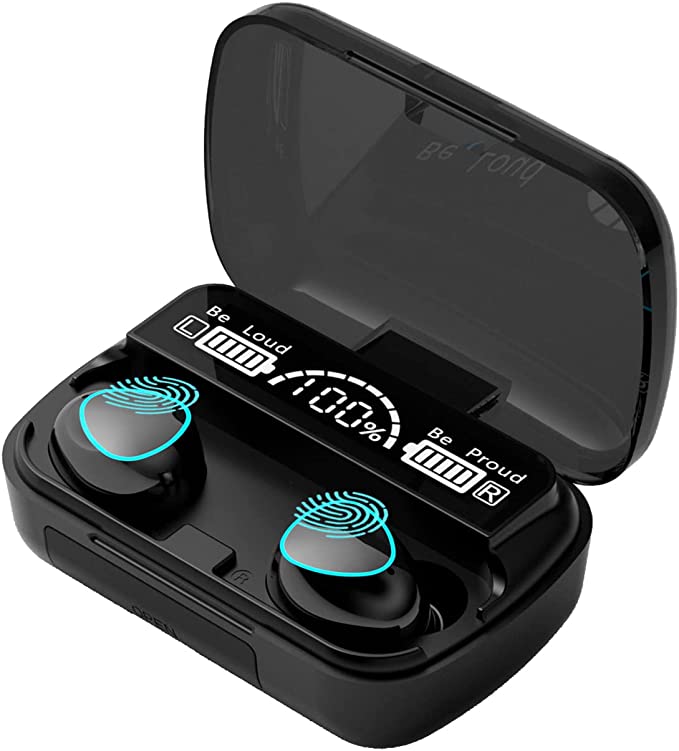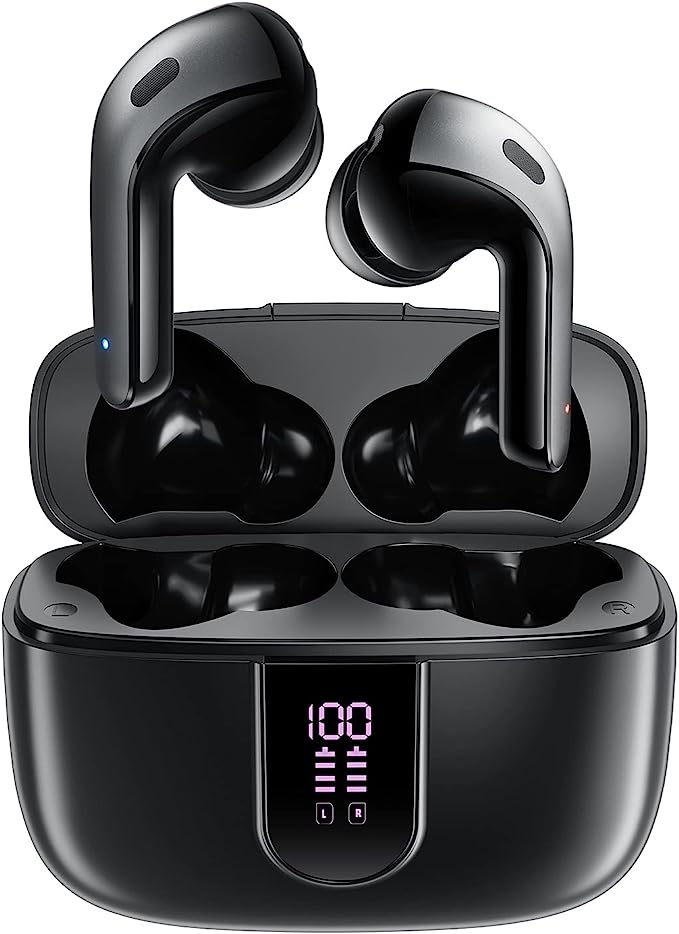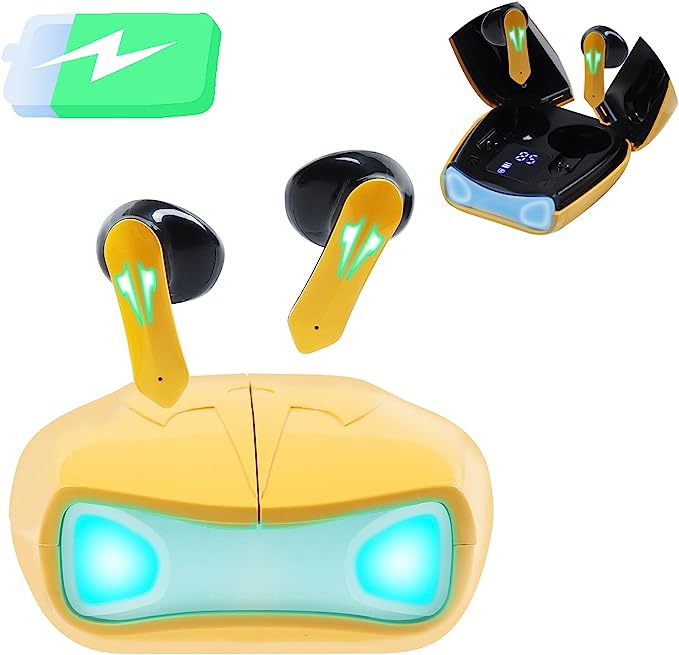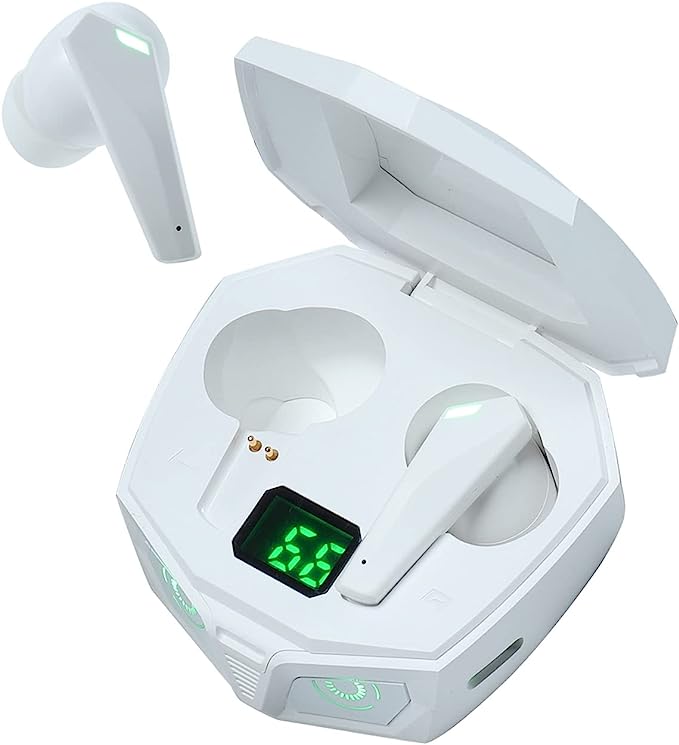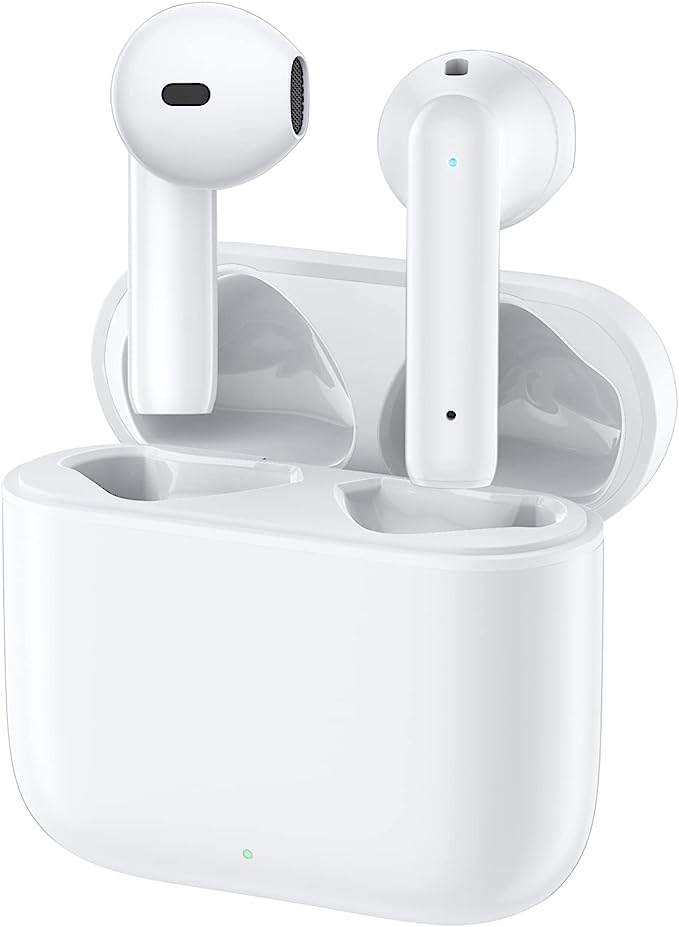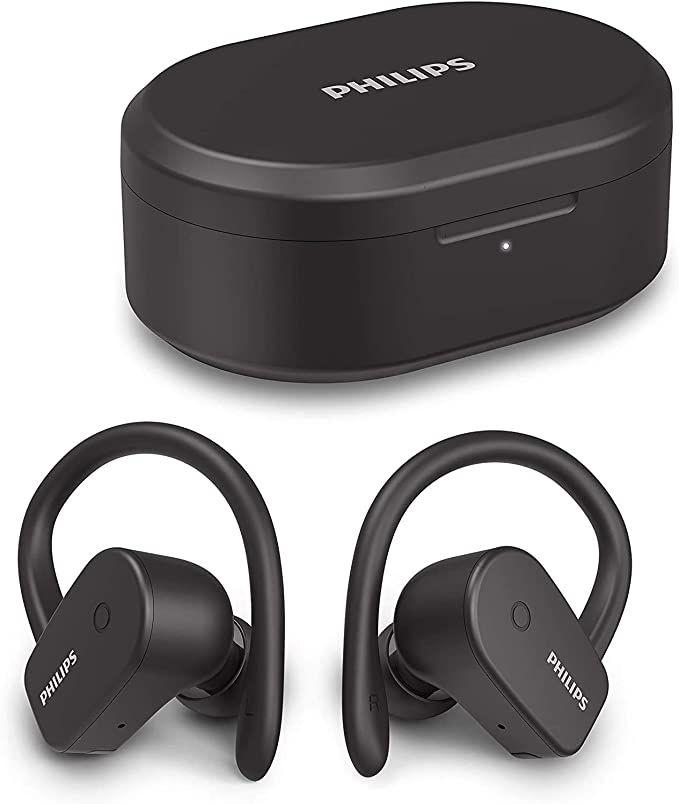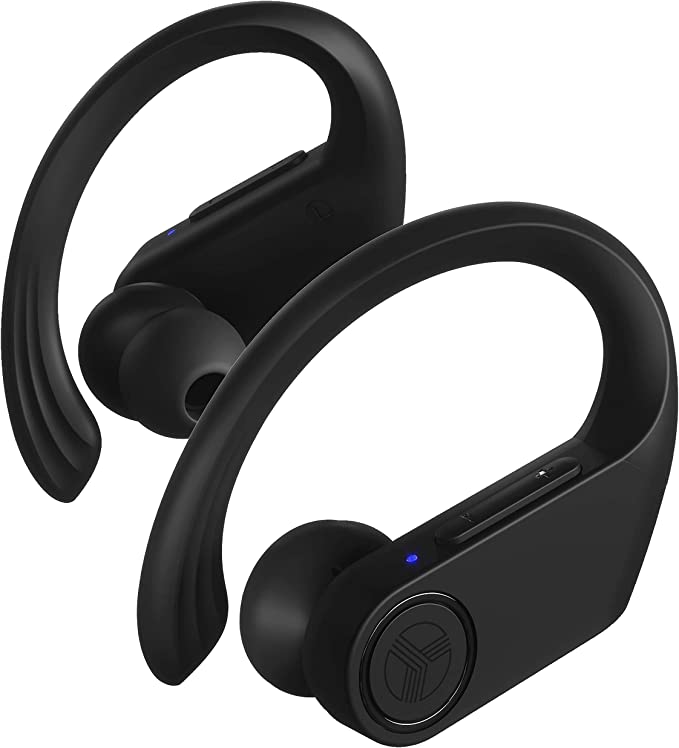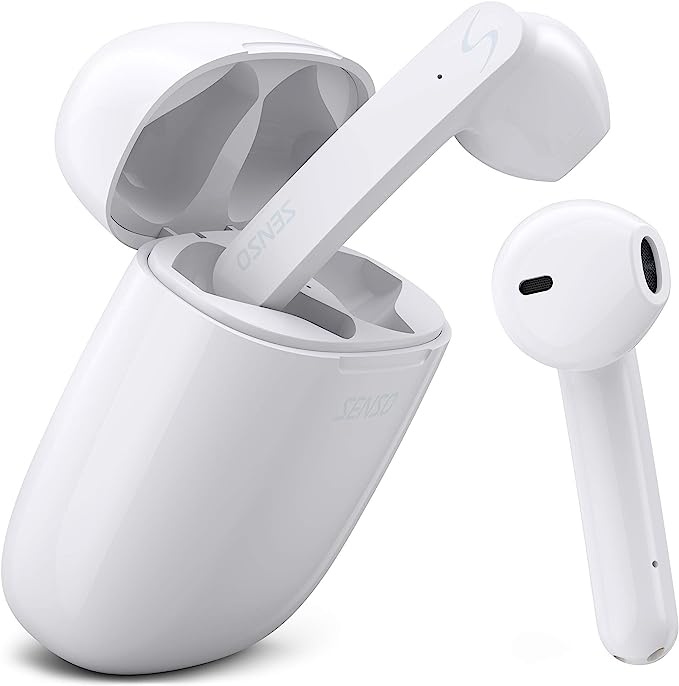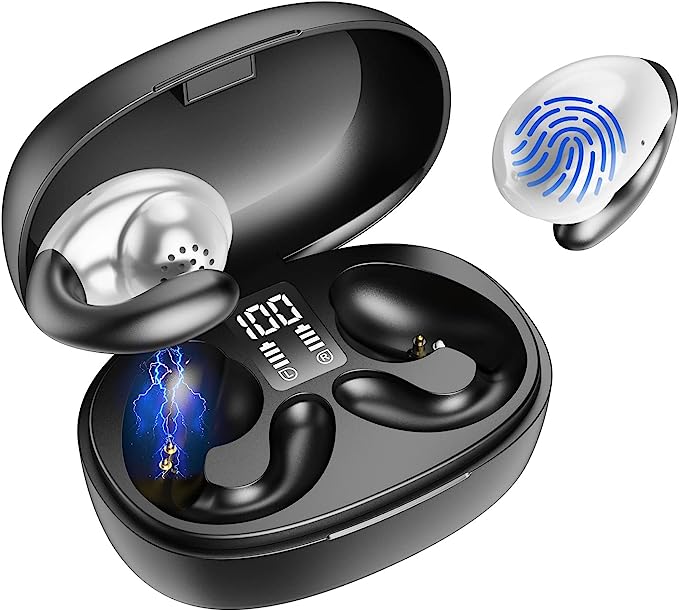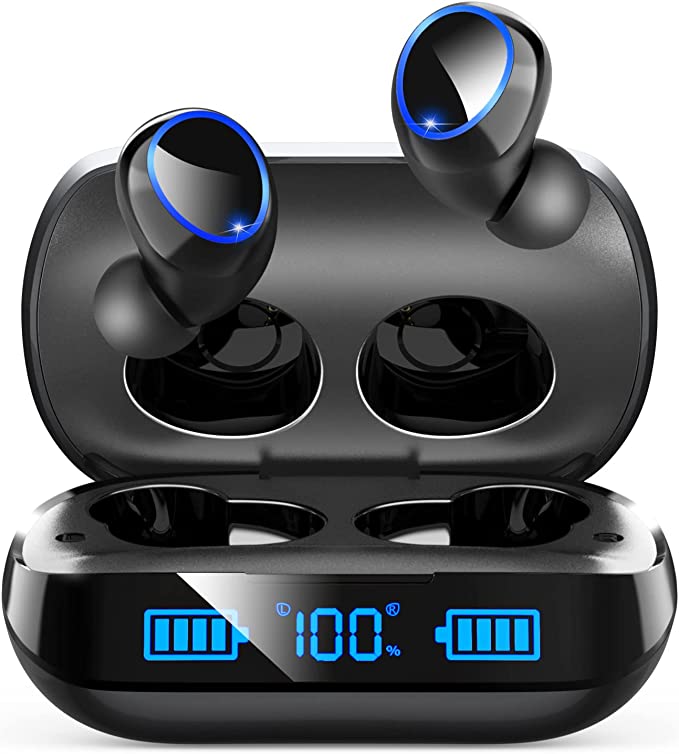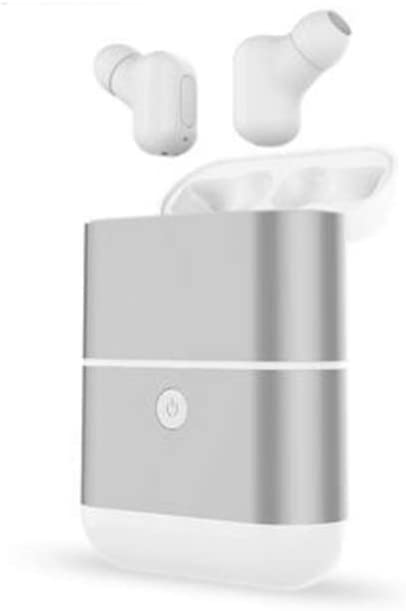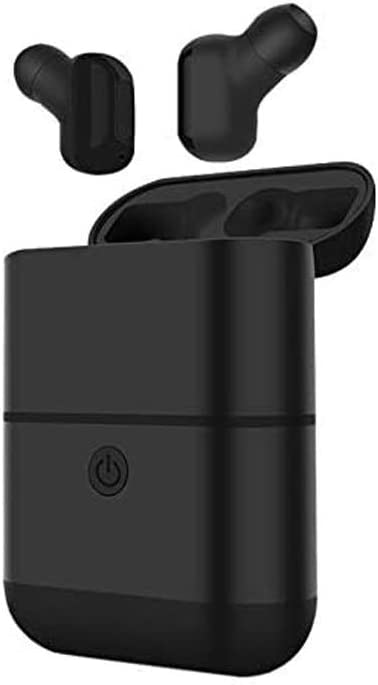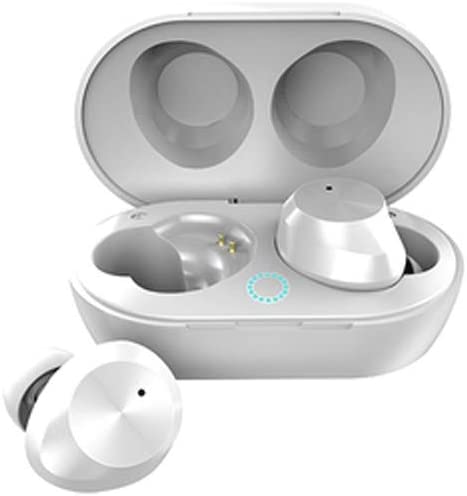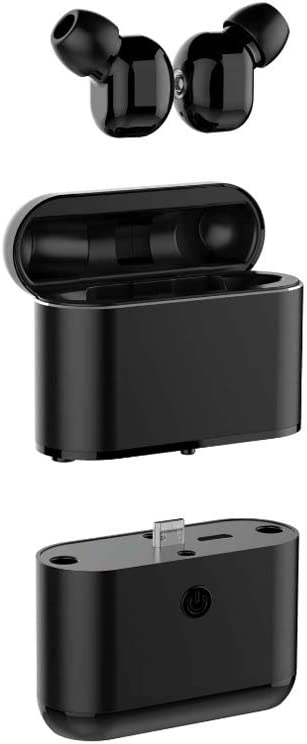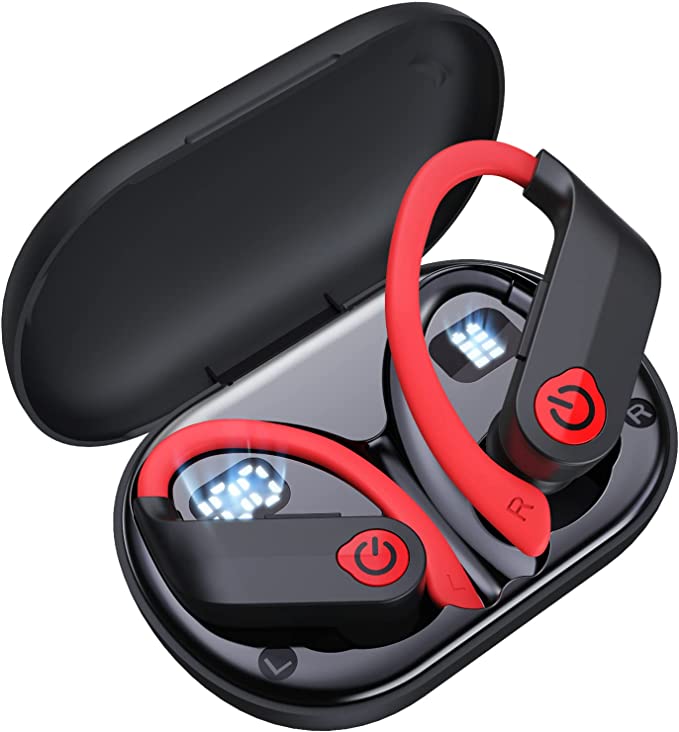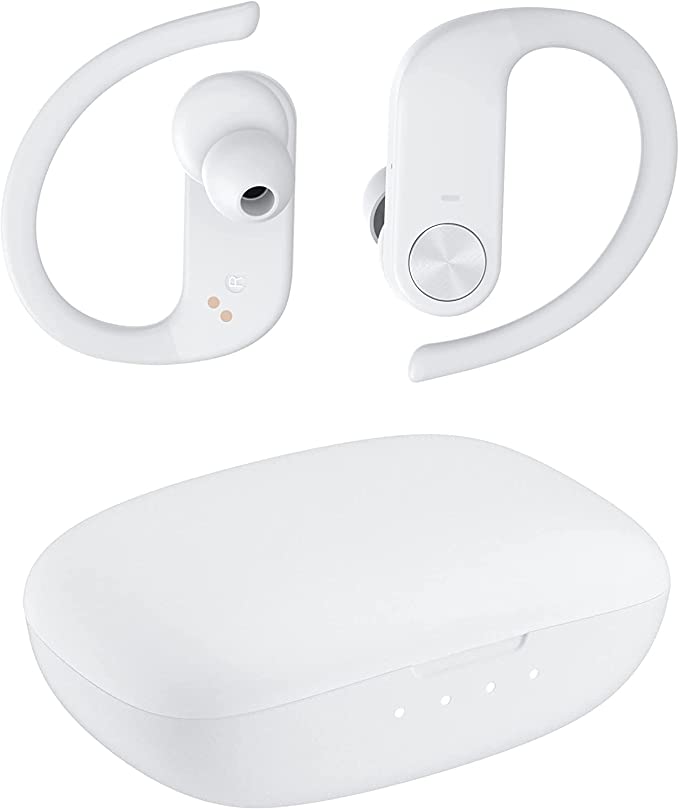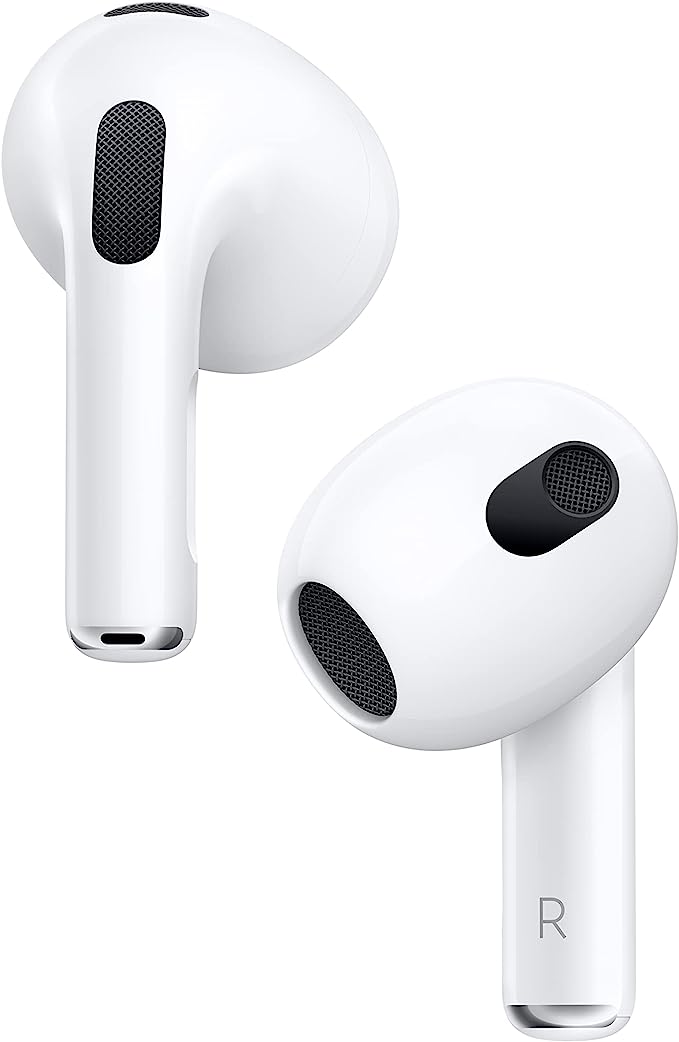TBIIEXFL Headphones: Long-Lasting Wireless Stereo Sound for Your Active Life
Update on Feb. 19, 2025, 1:03 p.m.
Have you ever been on a run, only to have your headphone wires snag on something, yanking the earbuds out of your ears? Or maybe you’ve been on a long flight, settling in to enjoy a movie, when your wireless earbuds die, leaving you in silence. These frustrating experiences are all too common with traditional headphones. That’s where wireless earbuds come in, offering a convenient and tangle-free way to enjoy your audio. The TBIIEXFL Headphones, from tbiie, are one such example, providing a combination of features designed for active lifestyles and extended listening. Let’s delve into the technology that makes them tick.
Understanding True Wireless Stereo (TWS)
The term “True Wireless Stereo” (TWS) might sound technical, but the concept is quite simple. Imagine two separate speakers, each receiving its own audio signal wirelessly, without any physical connection between them. That’s essentially what TWS earbuds do. Unlike traditional Bluetooth headphones that have a wire connecting the left and right earbuds, TWS earbuds are completely independent.
Each earbud contains its own Bluetooth chip, battery, and driver (the component that produces sound). They connect wirelessly to your smartphone, tablet, or other Bluetooth-enabled device, and they also communicate with each other to synchronize the audio and create a stereo soundstage. This lack of wires provides unparalleled freedom of movement, making TWS earbuds ideal for workouts, commutes, and everyday use. You can say goodbye to tangled cords and enjoy a truly untethered listening experience.

The Power of Portability: The Charging Case
One of the key features of many wireless earbuds, including the TBIIEXFL, is the charging case. This isn’t just a convenient way to store your earbuds; it’s also a portable power bank. The TBIIEXFL’s charging case boasts a 1600mAh battery capacity. But what does that mean?
“mAh” stands for milliampere-hour, a unit of electrical charge. The higher the mAh number, the more energy the battery can store. In the case of the TBIIEXFL, the 1600mAh charging case can recharge the earbuds multiple times, significantly extending your total listening time. While we don’t know the exact battery life of the earbuds themselves (a crucial piece of missing information), it’s safe to say that the charging case provides a substantial boost.
Furthermore, the TBIIEXFL’s charging case offers an emergency phone charging feature. If your smartphone is running low on power, you can use the case to give it a boost. This can be a lifesaver in situations where you need to make a call or send a message but don’t have access to a power outlet.
Let’s talk a bit about battery technology. Most charging cases, including this one, use lithium-ion batteries. These batteries are popular in portable devices because they’re relatively lightweight, have a high energy density (meaning they can store a lot of energy for their size), and don’t suffer from the “memory effect” that plagued older battery technologies.

Built to Endure: Waterproof Design
If you’re an active person, you need headphones that can keep up with you. Sweat, rain, and splashes are all potential hazards for electronic devices, which is why water resistance is a crucial feature for many earbuds. The TBIIEXFL Headphones are described as “waterproof,” which suggests they can withstand a significant amount of moisture.
However, it’s important to note that “waterproof” is a general term. The specific level of water resistance is usually indicated by an IP (Ingress Protection) rating, such as IPX4, IPX5, or IPX7. Unfortunately, the IP rating for the TBIIEXFL Headphones is not specified in the provided information.
Here’s a quick rundown of common IPX ratings for headphones:
- IPX4: Splash-resistant from any direction.
- IPX5: Protected against water jets from any direction.
- IPX7: Can be submerged in up to 1 meter of water for 30 minutes.
Without knowing the specific IP rating, we can’t say for sure how much water the TBIIEXFL Headphones can handle. However, the “waterproof” designation implies that they’re at least suitable for workouts and use in light rain.
Effortless Control: Touch Technology
Gone are the days of fumbling with tiny buttons on your headphones. The TBIIEXFL Headphones feature touch controls, allowing you to manage your music and calls with simple gestures. These controls typically rely on capacitive sensors, which are the same technology used in smartphone touchscreens.
Capacitive sensors detect changes in electrical capacitance caused by your touch. When you tap or swipe your finger on the surface of the earbud, the sensor registers the change and sends a signal to the internal circuitry. This signal is then interpreted as a specific command, such as play/pause, skip track, answer call, or activate a voice assistant.
Common touch control gestures include:
- Single Tap: Play/pause music, answer/end calls.
- Double Tap: Skip to the next track (often on the right earbud) or go back to the previous track (often on the left earbud).
- Long Press: Activate voice assistant (e.g., Siri, Google Assistant) or reject an incoming call.
Touch controls offer a convenient and intuitive way to interact with your earbuds, especially when you’re on the move and can’t easily access your phone. They also contribute to the sleek and minimalist design of many wireless earbuds. The TBIIEXFL Headphones offer both Chinese and English voice prompts.
A Peek Inside: How Wireless Earbuds Work
Let’s take a simplified look at the main components that make wireless earbuds like the TBIIEXFL function:
-
Bluetooth Chip: This is the heart of the wireless connection. It’s a tiny microchip that handles the communication between the earbuds and your device (smartphone, tablet, etc.). The Bluetooth chip uses radio waves to transmit audio signals wirelessly. The specific version of Bluetooth (e.g., 5.0, 5.2) affects the range, stability, and power consumption of the connection. Unfortunately, the Bluetooth version for the TBIIEXFL is not specified in the provided information. Newer Bluetooth versions generally offer improved performance.
-
Driver: This is the component that actually produces the sound you hear. It’s essentially a tiny loudspeaker. There are different types of drivers, the most common being dynamic drivers and balanced armature drivers. Dynamic drivers are known for their ability to produce strong bass, while balanced armature drivers are often favored for their clarity and detail. Again, the specific driver type used in the TBIIEXFL is not specified.
-
Battery: Each earbud contains a small rechargeable battery, usually a lithium-ion battery, to power its operation. The battery life of the earbuds depends on the battery capacity and how efficiently the other components use power.
-
Microphone: Many wireless earbuds, including the TBIIEXFL, have built-in microphones. These allow you to make phone calls, use voice assistants, and sometimes provide noise cancellation features (although it’s not clear if the TBIIEXFL offers active noise cancellation).
-
Digital Signal Processor (DSP): This is a specialized chip that processes the digital audio signal before it’s sent to the driver. The DSP can perform various functions, such as equalizing the sound (adjusting the balance of different frequencies), adding effects, and implementing noise reduction algorithms.
-
Ear Tips: The detachable, soft tips that go in the ears. Multiple sizes provides a better fit.
The interaction of these components is quite complex, but in essence, the process goes something like this:
- Your device (e.g., smartphone) sends a digital audio signal via Bluetooth to the earbuds.
- The Bluetooth chip in the earbuds receives the signal.
- The DSP processes the signal, making adjustments to the sound.
- The processed signal is sent to the driver.
- The driver converts the electrical signal into sound waves, which you hear.

The Evolution of Wireless Audio
The convenience of wireless audio hasn’t always been a reality. The history of headphones stretches back over a century, with early models being bulky and wired. The development of wireless technology, particularly Bluetooth, revolutionized the headphone industry.
Bluetooth was invented in the late 1990s by Ericsson, a Swedish telecommunications company. The name “Bluetooth” comes from a 10th-century Danish king, Harald Bluetooth, who was known for uniting Scandinavia. The technology was designed as a short-range wireless communication standard, intended to replace cables for connecting various devices.
The first Bluetooth headphones appeared in the early 2000s, but they were initially quite expensive and had limited battery life. Over time, Bluetooth technology has advanced significantly, with newer versions offering improved range, stability, and power efficiency. The introduction of True Wireless Stereo (TWS) technology was another major leap, eliminating the wire between the earbuds entirely.

Choosing the Right Fit
The best sound and features will not matter if the earbuds are uncomfortable. The TBIIEXFL, with its separated ear design, aims for a more secure and stable fit, especially during activities. Having multiple sizes of ear tips included is crucial because ear canal shapes and sizes vary greatly. A good seal in the ear canal is important not just for comfort, but also for sound quality (especially bass response) and passive noise isolation. Experimenting with the different sizes of ear tips is vital to find the most comfortable and best-sounding fit.

Conclusion
The TBIIEXFL Headphones represent a step into the world of convenient, wire-free audio. With their True Wireless Stereo design, extended playtime thanks to the 1600mAh charging case, waterproof construction, and touch controls, they offer a compelling set of features for those seeking an active and untethered listening experience. The inclusion of both Chinese and English voice prompts adds to their user-friendliness.
However, it’s important to acknowledge the limitations of our assessment due to missing information. We don’t know the specific Bluetooth version, the supported audio codecs, the driver type, or the precise IP rating for water resistance. These details are important for a complete understanding of the product’s performance and capabilities.
Despite these gaps, the TBIIEXFL Headphones highlight the ongoing evolution of wireless audio. As technology continues to advance, we can expect even more sophisticated and feature-rich wireless earbuds to emerge, offering improved sound quality, longer battery life, and greater integration with our digital lives. The trend is clear: wireless is the future of personal audio.

